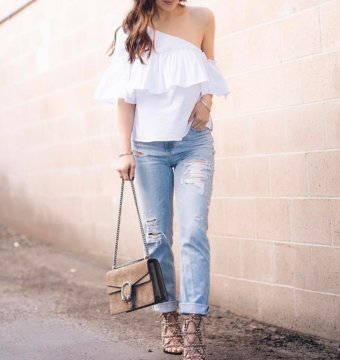AI in Fashion
Personalized Styling and Virtual Try-Ons
Discover how artificial intelligence is reshaping the fashion world through personalized styling, virtual try-ons, and sustainable innovation.
Introduction: The Intersection of Fashion and Technology
The fashion industry, known for creativity and trends, is experiencing a technological revolution. Artificial intelligence (AI) has become a core tool in enhancing shopping experiences, predicting trends, and even creating new styles. AI allows consumers to discover styles uniquely suited to them while brands operate more sustainably and efficiently.
From virtual fitting rooms to AI-powered personal stylists, fashion is no longer limited to physical stores. Shoppers can now receive tailored recommendations and visualize outfits digitally. The integration of AI in fashion improves customer satisfaction, reduces returns, and promotes eco-conscious shopping.
Understanding Personalized Styling
Personalized styling provides fashion recommendations tailored to an individual's tastes, body type, lifestyle, and even mood. Traditionally handled by personal stylists, AI now automates this process using complex algorithms that analyze vast amounts of data.
Platforms like Stitch Fix use AI combined with human stylists to offer highly personalized clothing recommendations. AI analyzes customer preferences, past purchases, sizes, and social media activity to suggest the perfect outfits, making shopping convenient and enjoyable.

How AI Collects and Uses Data
AI relies on data from online shopping behavior, social media, previous purchases, and style quizzes to understand user preferences and predict future fashion choices. The more a customer interacts with the system, the more accurate the recommendations become.
Machine learning models identify patterns, such as frequently purchased colors or preferred clothing styles. AI also tracks emerging trends globally, helping brands predict which styles will be popular next season.
Virtual Try-Ons: The Future of Shopping
Virtual try-on technology lets customers visualize clothes digitally using AI-powered augmented reality (AR). Users can upload photos or use real-time camera feeds to see how clothing fits, adjusting for size and fabric behavior.
Apps like Zeekit and Fitle allow digital fitting rooms, reducing uncertainty in online shopping and minimizing returns.

Benefits of Virtual Try-Ons
Virtual try-ons benefit consumers and retailers alike. Shoppers gain confidence in styling choices, while retailers experience fewer returns, increased engagement, and valuable insights into customer preferences. Digital try-ons also encourage experimenting with new combinations of clothing, colors, and accessories.
AI-Driven Fashion Recommendations
AI analyzes trends from fashion shows, social media, and customer behavior to offer personalized outfit suggestions. Recommendations consider seasonality, regional trends, occasions, and even weather conditions, making AI a reliable 24/7 personal stylist.
Impact on Sustainability
AI contributes to sustainability by optimizing inventory, predicting demand, reducing unsold stock, and decreasing returns. Brands can design pieces more likely to be worn and appreciated, minimizing fast fashion’s environmental impact.
AI also helps source eco-friendly fabrics and suggests outfit combinations that extend clothing life, promoting a circular fashion economy.
Case Studies: Brands Using AI in Fashion
- Stitch Fix: AI-powered personalized styling and predictive analytics.
- Tommy Hilfiger: Collaborates with IBM Watson AI to analyze trends and customer feedback.
- Zara: Uses AI to optimize inventory and supply chain efficiency.
- Adidas: Employs AI for personalized shopping and virtual try-on apps.

Challenges and Limitations
AI relies on personal data, raising privacy concerns. Ensuring secure, ethical use of data is essential. Additionally, algorithms must avoid bias to provide inclusive fashion recommendations for all body types and cultural backgrounds.
The Future of AI in Fashion
- Fully immersive virtual reality shopping experiences.
- AI-generated fashion designs tailored to users.
- Smarter supply chain management to reduce waste.
- Integration of wearable AI technology for adaptive clothing.
The future promises seamless, personalized fashion journeys, merging digital and physical experiences for consumers.
Conclusion
AI is transforming fashion through personalized styling, virtual try-ons, and intelligent recommendations. Consumers enjoy convenience and creativity, while brands benefit from sustainability and efficiency. With continuous innovation, AI will redefine fashion experiences, making them more personalized, engaging, and eco-friendly.
Show FAQs
AI in fashion uses artificial intelligence to personalize styling, predict trends, and enhance shopping experiences. Internal: AI Fashion Introduction.
They use AR/AI technology to simulate how clothing or accessories look on a user virtually. Internal: Virtual Try-Ons. External: Vogue Virtual Try-On.
Yes, AI analyzes your preferences and suggests personalized outfits. Internal: Personalized Styling AI.
Absolutely! It improves size predictions, reduces returns, and offers tailored recommendations. Internal: AI Online Shopping. External: Forbes AI in Fashion.
Yes, it analyzes social media, sales data, and runway shows to forecast trends. Internal: AI Fashion Trends.
By optimizing inventory, reducing waste, and promoting eco-friendly materials. Internal: Sustainable Fashion AI. External: GreenBiz Fashion AI.
They are increasingly accurate, simulating fit, color, and style using AI algorithms. Internal: Virtual Fit Accuracy.
Yes, AI provides trend predictions, fabric recommendations, and design inspirations. Internal: AI for Designers. External: BoF AI Design.
No, AI assists stylists by providing data-driven suggestions, but creativity remains human-led. Internal: Human vs AI Styling.
Use apps or websites that offer AI-powered virtual try-ons and personalized recommendations. Internal: AI Fashion Apps. External: Vogue Try-On Apps.












No comments: